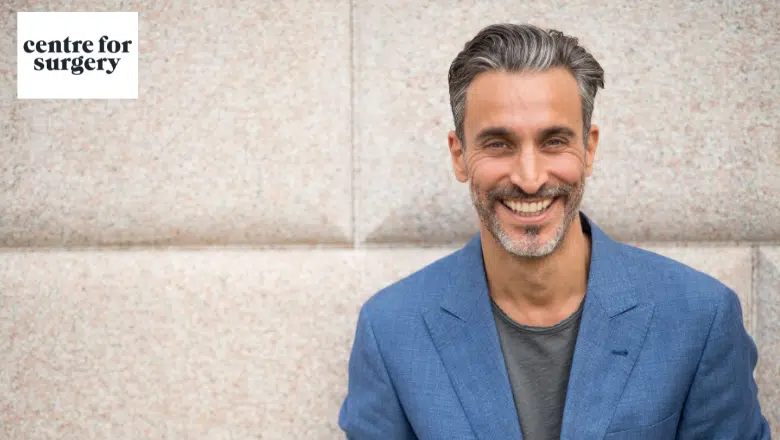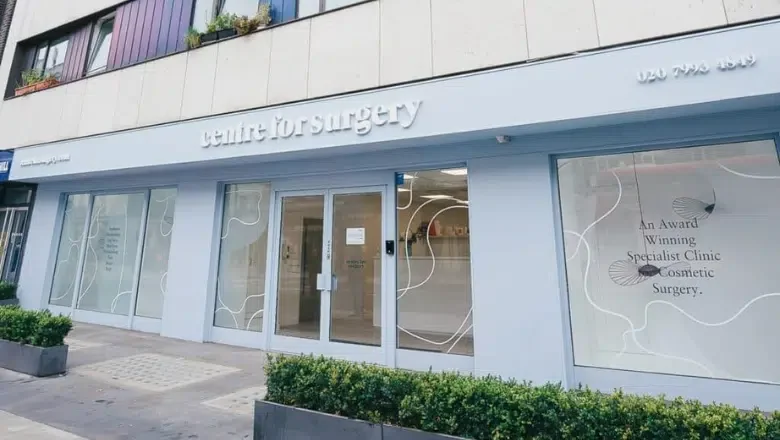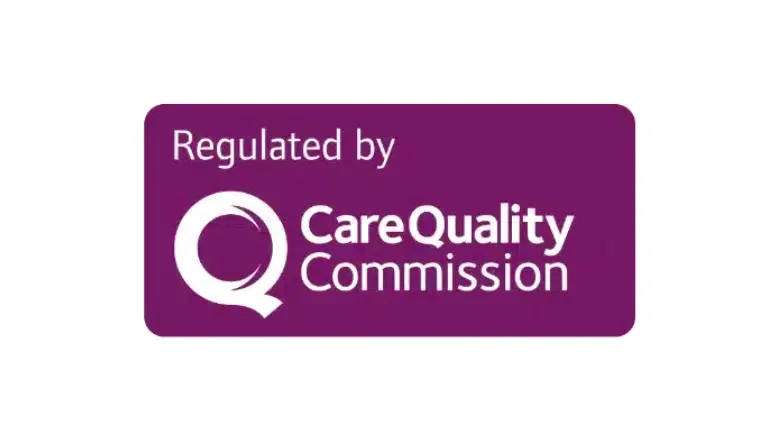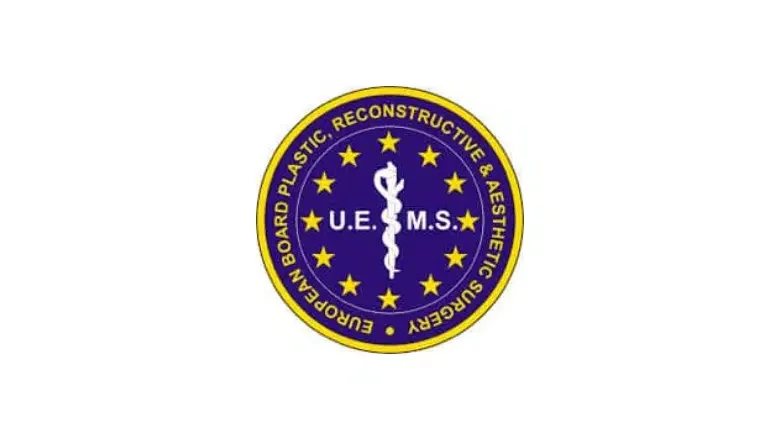Facial plastic surgery for men is no longer a rare choice in the UK. In fact, it has become a widely accepted option for those looking to maintain a youthful appearance or address concerns such as loose or sagging skin. Men are increasingly turning to cosmetic procedures to boost their confidence and enhance their overall look. Among the variety of treatments available, facelift surgery is a particularly effective solution for rejuvenating the face and combating visible signs of ageing.
At Centre for Surgery, our expert surgeons understand the unique needs of male patients and are dedicated to delivering natural-looking results. In this detailed guide, we’ll discuss what men can expect from facelift surgery, including the consultation process, the surgery itself, and the recovery journey. By the end of this article, you’ll have a clear understanding of the procedure and whether it may be the right choice for you.
A Closer Look at Facelift Surgery for Men
A male facelift, known in medical terms as a rhytidectomy, focuses on tightening loose skin in the face and neck. During the surgery, the underlying facial muscles are lifted and repositioned to provide a supportive foundation for the new contours. Excess skin is carefully removed, and the remaining tissue is then redraped to create an appearance that looks revitalised and more youthful. Although the procedure shares fundamental techniques with a traditional facelift, the primary objective is to preserve and emphasise masculine features, ensuring the final outcome appears natural rather than obviously enhanced.
RELATED: Key Questions to Explore Before Deciding on Facelift Surgery
Men often have distinct concerns about the ageing process, such as sagging around the jawline or noticeable neck bands that can affect their sense of confidence. Because a male facelift targets these issues head-on, the results are tailored to preserve a man’s angular facial structure. The surgeon’s approach includes strategic incisions, positioned in a way that allows for a discreet, post-surgical appearance. By focusing on facial planes and tissue arrangements that align with a male patient’s unique anatomical characteristics, the surgeon can refine the jawline and remove excess skin without compromising features that project masculinity.
Although the principles behind a facelift remain consistent—lifting, tightening, and removing surplus tissue—the differences between a male and female facelift lie in subtle aspects of the procedure. Men tend to have thicker skin and stronger facial muscles, which can affect surgical planning and technique. Hair-bearing skin around the cheeks and sideburns also requires precise handling to reduce the risk of visible scars or changes to natural hair patterns. Equally important is the fact that men may seek different aesthetic goals compared to women, with an emphasis on maintaining firmness along the chin and neck while still appearing authentically masculine.
How Male Facelifts Differ from Female Facelifts
Facial hair, skin thickness, and muscle definition play significant roles in the planning and execution of a facelift procedure for men. In many cases, men have beards or sideburns that must be preserved or carefully managed so that the final appearance looks seamless. A critical aspect involves placing incisions in a way that does not disrupt hair patterns or cause obvious changes to the natural hairline. If sideburns are positioned incorrectly, the result can appear unnatural, and it may draw unnecessary attention to the surgical area. A thoughtful approach that respects existing facial hair ensures that men retain a masculine presentation and avoid the tell-tale signs of having had cosmetic work.
RELATED: Differences Between Male and Female Facelifts
Male skin also tends to be thicker and more vascular, so surgeons pay close attention to this when they reposition and redrape the tissues. Excessive tension on thicker skin can lead to a pulled or unnatural look, and the goal is always to create a refreshed appearance that aligns with the patient’s unique bone structure. This heightened vascularity occasionally leads to more noticeable swelling and bruising post-surgery, so the overall recovery timeline can be a bit longer compared to what many women experience. During the healing process, men might also notice more pronounced changes in the first week or two, but these effects usually fade as time goes on and the final outcome emerges.
Muscle mass in the jaw and neck is often more developed in men, which means that repositioning the deeper layers of facial tissue can require specialised techniques. Surgeons factor in the added bulk of these muscles to achieve a strong, masculine profile without flattening or feminising the angles of the face. A male patient’s aesthetic goals often emphasise subtle refinements that retain a rugged look, whereas many women prefer a more transformative shift in their facial contours.
Deciding if Facelift Surgery is the Right Choice
For many men, addressing skin laxity, deep wrinkles, jowls, and a loss of definition in the face and neck becomes increasingly important with age. A facelift can serve as a practical solution if you are looking for a meaningful improvement rather than a minor change. Not everyone is an ideal candidate, so having a clear idea of the procedure’s requirements can help you determine if it aligns with your expectations. Men who consider a facelift often share certain characteristics that make them more likely to enjoy successful outcomes.
Being in good overall health is essential, as any surgery places stress on the body. A strong immune system and the ability to heal well play major roles in how smoothly you progress through recovery. Another key factor involves having a realistic outlook on what the procedure can accomplish. While a facelift can deliver significant enhancements in appearance, it won’t stop the natural ageing process or guarantee the perfection some might imagine. Understanding its limitations can prevent disappointment and ensure greater satisfaction when you finally see the results.
Lifestyle choices also matter. Non-smokers typically heal faster, with fewer complications, so quitting smoking before and after surgery is strongly recommended. In fact, surgeons often advise patients to maintain a smoke-free lifestyle for a period leading up to the operation and throughout the healing phase to support optimal circulation. If you already have good skin elasticity, you may notice more dramatic improvements, because your skin will respond well to the adjustments made beneath the surface. This resilience helps produce results that look smooth and natural rather than overly pulled or tight.
Essential Steps When Preparing for Your Facelift
When preparing for a facelift, one of the first things you should do is speak with your surgeon about any medications or supplements you’re taking. Certain types of medication can increase the risk of bleeding, which is why you may need to adjust your regimen ahead of time. If you currently smoke, you will also receive guidance about quitting at least a few weeks before the operation begins since smoking has a detrimental impact on circulation and healing. Many men find that setting a strict quit date and sticking to it not only aids surgical recovery but can also lead to longer-term health benefits.
Another aspect you will need to consider is arranging for assistance following the procedure. Because sedation or general anaesthesia is commonly used during a facelift, you will need someone to drive you home afterwards. It’s also advisable to arrange for help at home, especially during the first several days when you might experience discomfort or feel too tired for routine activities. By planning ahead, you can focus on resting and recovering, knowing that daily tasks such as cooking and household chores will be covered.
It’s equally important to inform your workplace and organise sufficient time off to let your body heal properly. Some men choose to take a full two weeks away from work, while others may plan for a slightly longer period if their job involves a lot of physical activity. Each individual heals at a different rate, but allowing ample time and staying in close communication with your surgeon about when it’s safe to resume various pursuits will help you achieve the best possible outcome.
During your consultation, the surgeon will also discuss the type of anaesthesia recommended for your specific case. Options generally include general anaesthesia or a combination of local anaesthesia with sedation. This choice often depends on the extent of the procedure and your personal preferences, so it’s helpful to raise any concerns or questions at this stage. The surgeon will outline the potential risks and complications as well, which may include bruising, swelling, and, in rare instances, infection or nerve injury. Such issues are unusual when you follow medical advice, but knowing these possibilities in advance gives you a well-rounded perspective on what to expect.
Surgical Process and Incisions
Facelift surgery for men is usually carried out under general anaesthesia at our Baker Street centre, which means you will be fully asleep and unaware of any discomfort. The length of the procedure can vary, but it often takes several hours, depending on the extent of the corrections required. During the operation, the surgeon will make small incisions near your hairline, around your ears, and in certain cases beneath your chin. These incisions are carefully positioned to grant access to the deeper layers of the face and neck without drawing excessive attention to potential scarring.
Once the underlying structures are revealed, the surgeon will tighten and reposition the muscles to restore a more youthful contour. Excess skin is removed, and the remaining tissue is gently pulled back into place. Any small incisions are then sealed with sutures or surgical tape to promote proper healing, and a bandage is applied around your head to reduce swelling and stabilise the tissues. This protective dressing also supports the refreshed shape of your face in the immediate post-operative period. Because every individual has a unique facial structure, a customised approach ensures the outcome complements your natural features and retains a distinctly masculine appearance.
Recovery and Aftercare
The initial period following a male facelift generally includes some degree of swelling, bruising, and discomfort. Your surgeon will prescribe pain medication to help control any unpleasant sensations, and you will also receive guidance on caring for the incisions and managing bandages. It is extremely important to follow these instructions closely to promote optimal healing and minimise potential complications such as infection or prolonged swelling. Although every patient heals at a different pace, most men feel ready to resume everyday activities or non-strenuous work within two to three weeks.
RELATED: Facelift Recovery – Top Tips For Quicker Healing
During the early stages of your recovery, avoiding activities that raise your blood pressure or strain your facial muscles can help protect your incisions. Strenuous exercise and heavy lifting are generally discouraged for at least a few weeks to give your body a chance to rebuild and recover. Direct sun exposure can also be detrimental during the healing phase, so wearing protective clothing or a broad-spectrum sunscreen ensures your skin remains shielded from UV rays. As the swelling gradually fades, the improvements in your facial contours will become more noticeable, although it may take a few months for the final outcome to stabilise completely.
Maintaining Your Facelift Results
Adopting healthy lifestyle habits plays a crucial part in sustaining the benefits of facelift surgery. A balanced diet rich in nutrients will support overall health, while staying well-hydrated keeps your skin looking firm and resilient. Regular exercise encourages good circulation, and avoiding smoking can help protect the elasticity of your skin by reducing the harmful effects of tobacco on blood vessels and collagen. Taking these steps can significantly extend the longevity of your new, rejuvenated appearance.
Protecting your skin from UV damage is also essential, so daily use of broad-spectrum sunscreen can help prevent wrinkles and discolouration from forming in the future. Incorporating a thoughtful skincare routine will further enhance skin quality by encouraging cell renewal and collagen production. Many men benefit from adding non-surgical treatments such as wrinkle-relaxing injections or dermal fillers to maintain the youthful contours achieved by the facelift. By scheduling periodic follow-up appointments, your surgeon can recommend appropriate touch-ups and help you decide whether additional treatments could prolong or refine your results.
Potential Risks of a Facelift for Men
Men considering facelift surgery should be aware of the potential complications that can arise, as every surgical procedure carries some degree of risk. Many of these concerns are relatively rare, yet knowing about them in advance helps you make an informed decision and prepare for the post-operative period. A qualified surgeon will discuss these issues during your consultation, as well as ways to reduce their likelihood and ensure a smoother recovery.
Bleeding and Haematoma
Bleeding may occur shortly after surgery and, in some cases, can lead to the formation of a haematoma, which is a collection of blood beneath the skin. Surgeons take measures to minimise this risk by advising patients to avoid certain medications and supplements that can thin the blood. If excessive bleeding does happen, additional intervention or drainage may be necessary. Though this event is uncommon, it remains essential to monitor the surgical site closely and report any unusual swelling or discomfort to your medical team straight away.
Infection
The possibility of infection is present in any form of surgery, and facelifts are no exception. However, the overall risk can be lowered by strictly following your surgeon’s guidelines for wound care, hygiene, and medication use. Antibiotics may be prescribed to further lessen the chances of developing an infection, and it is vital to complete the full course of these medications even if you feel better beforehand. Contacting your healthcare provider immediately if you experience increased pain, redness, or discharge around the incision site ensures that any emerging infection is treated swiftly.
Nerve Injury
Facelift surgery involves repositioning and tightening skin and muscle tissue, which places the facial nerves at some risk. Temporary numbness, tingling, or weakness can occur due to nerve irritation or inflammation. Fortunately, these sensations typically resolve within a few weeks or months as the nerves recover. Permanent nerve damage is rare, but it is still crucial to follow your surgeon’s advice regarding any movements or facial exercises in the early healing stages.
Anaesthesia Complications
The use of general anaesthesia or sedation means that there is a risk of anaesthesia-related complications, although these events are typically infrequent. Your anaesthetist will review your medical history and current health to identify potential concerns, and they will monitor your vital signs throughout the operation. By disclosing any pre-existing conditions, allergies, or medications you are taking, you help the medical team maintain a safe environment during surgery.
Skin Necrosis
A rare complication, skin necrosis occurs when the skin does not receive enough blood supply after surgery. Smoking and certain medical conditions that affect circulation can elevate this risk, so your surgeon may advise you to quit smoking for several weeks before and after the procedure. If skin necrosis does happen, additional treatments or revision surgery may be required to address the affected area. While this can be alarming, careful preparation and adherence to medical guidance dramatically reduce the chances of experiencing this issue.
Scarring
Incisions made during a facelift are placed in discreet locations around the hairline and ears, yet some degree of scarring is inevitable. In the majority of cases, these scars fade over time and blend into the natural contours of the face. Certain individuals may be prone to hypertrophic or keloid scars, which can appear thicker or more raised than usual. By monitoring your healing process and following post-operative instructions, you can help ensure that any scarring remains as minimal and unobtrusive as possible.
Unsatisfactory Results
Facelift surgery can produce very satisfying outcomes for most men, but there is always a possibility of disappointment if your results do not align with your expectations. Reasons for dissatisfaction vary and may include asymmetry, prolonged swelling, or changes in facial appearance as you heal. This underscores the importance of having realistic expectations and communicating openly with your surgeon regarding the look you hope to achieve. If adjustments are necessary, revision procedures may be considered after sufficient recovery time has passed.
FAQs about Facelift for Men in the UK
How long do the effects of a male facelift typically last?
A facelift for men is known to provide long-lasting benefits, but it is not considered a permanent remedy for ageing. Many individuals enjoy improvements for seven to ten years or sometimes even longer. The exact duration depends on factors such as personal ageing patterns, genetic makeup, lifestyle choices, and how diligently you maintain your skin’s overall health. Some men choose to undergo minor follow-up procedures or opt for non-surgical treatments to keep their results looking fresh over time. This can be especially helpful if you have experienced any significant changes in weight or if your skin has been exposed to harsh environmental conditions that influence its elasticity.
Will a facelift eliminate all wrinkles and fine lines?
A facelift can address loose skin and deeper creases, particularly those around the jawline, cheeks, and neck, yet it may not completely erase every fine line. Surface lines caused by sun damage or repeated facial expressions are often better treated with additional options such as laser resurfacing, chemical peels, or wrinkle-relaxing injections. If fine lines remain a concern, your surgeon can discuss whether integrating other procedures or therapies at the same time as your facelift is advisable. In many cases, a combination of surgical and non-surgical measures provides the most balanced approach, ensuring the overall result looks natural rather than overly smooth or tight.
Is it possible to have a facelift if I have a beard or prefer keeping facial hair?
Men with beards or prominent facial hair can still opt for a facelift without compromising their signature look. A surgeon who regularly performs male facelifts will pay careful attention to how the incisions are placed so that your natural hair patterns are preserved. Meticulous planning helps ensure that you can continue to grow facial hair without awkward gaps or noticeable changes to the hairline. Some men may be advised to shave or trim particular areas before surgery to give the surgeon clear access to the skin and facial muscles, but this is a temporary measure discussed during the consultation phase. The end result should look cohesive with your usual style and preserve the masculine contours of your face.
How much time should I plan to take off work after surgery?
The amount of time you will need to recuperate often varies, since it depends on both the nature of your facelift and what you do for a living. Many men find they require at least two to three weeks away from their professional routine to recover from initial swelling, bruising, and any discomfort. It’s wise to consider taking more time off if your job demands a lot of movement, lifting, or public engagement since you might prefer to wait until any visible signs of surgery have subsided. Your surgeon will advise you on when it is safe to resume everyday tasks, and you can return to more active pursuits once you’ve had the all-clear to ensure that your healing process remains smooth and uninterrupted.
Can I have other cosmetic procedures at the same time as my facelift?
A facelift can indeed be performed in combination with other treatments if doing so aligns with your goals and your surgeon’s recommendations. Many men choose to pair a facelift with a neck lift, eyelid surgery, or brow lift to achieve a balanced transformation in one operative session. Others decide to include facial fat transfer, dermal filler injections, or similar volumising measures for a more refined result. However, combining treatments must be done with care, which is why an in-depth conversation with your surgeon is so important. They will consider your overall health, the intricacy of each requested procedure, and the expected healing process before advising whether multiple interventions are suitable for you.
Why Choose Centre for Surgery for Your Male Facelift?
At Centre for Surgery, we pride ourselves on offering world-class expertise and personalised care tailored to the unique needs of every patient. As a leading clinic in London specialising in male facelift surgery, we combine cutting-edge techniques with a deep understanding of male facial anatomy to deliver results that are natural and masculine. With a team of highly experienced surgeons and a state-of-the-art facility on Baker Street, we are committed to helping you achieve your aesthetic goals with confidence.
Our approach is centred around you. From the moment you step into our clinic, you will receive bespoke guidance and a detailed treatment plan designed to meet your expectations. We understand that choosing to undergo a facelift is a significant decision, and we are here to provide clarity, support, and expertise every step of the way.
What Our Patients Say
John T.
“I was hesitant at first, but the team at Centre for Surgery made me feel completely at ease. My results are exactly what I hoped for—refreshed but still natural. I couldn’t recommend them more!”
Michael R.
“From the consultation to the aftercare, the experience was seamless. The surgeons really listened to my concerns and delivered results that exceeded my expectations. Truly life-changing.”
James L.
“The staff were incredibly professional and supportive throughout the entire process. My facelift has given me a renewed sense of confidence, and I feel years younger. Thank you to the whole team!”
Our Expert Team
Our surgeons are renowned for their skill and precision in performing male facelift procedures. Each member of our surgical team is fully accredited and brings years of experience to their practice. To learn more about our specialists, visit our Meet the Team page.
Flexible Finance Options
We believe that exceptional care should be accessible to everyone. That’s why we offer flexible finance options, including 0% APR plans through Chrysalis Finance. You can achieve your desired results without compromising your financial comfort. For more details, explore our finance options.
Comprehensive Support and Resources
For further insights into what sets Centre for Surgery apart, explore the following resources:
- About Us: Learn more about our ethos and commitment to excellence.
- Plastic Surgery Blog: Stay informed with expert insights and the latest trends in cosmetic surgery.
- FAQs: Find answers to common questions about our procedures.
- Baker Street Clinic: Discover our state-of-the-art facility conveniently located in Central London.
Book Your Consultation
Take the first step towards a refreshed and confident appearance by booking a consultation with one of our expert surgeons. Contact us today via phone at 0207 993 4849 or email us at contact@centreforsurgery.com. We look forward to helping you achieve your aesthetic goals with the highest level of care and professionalism.













